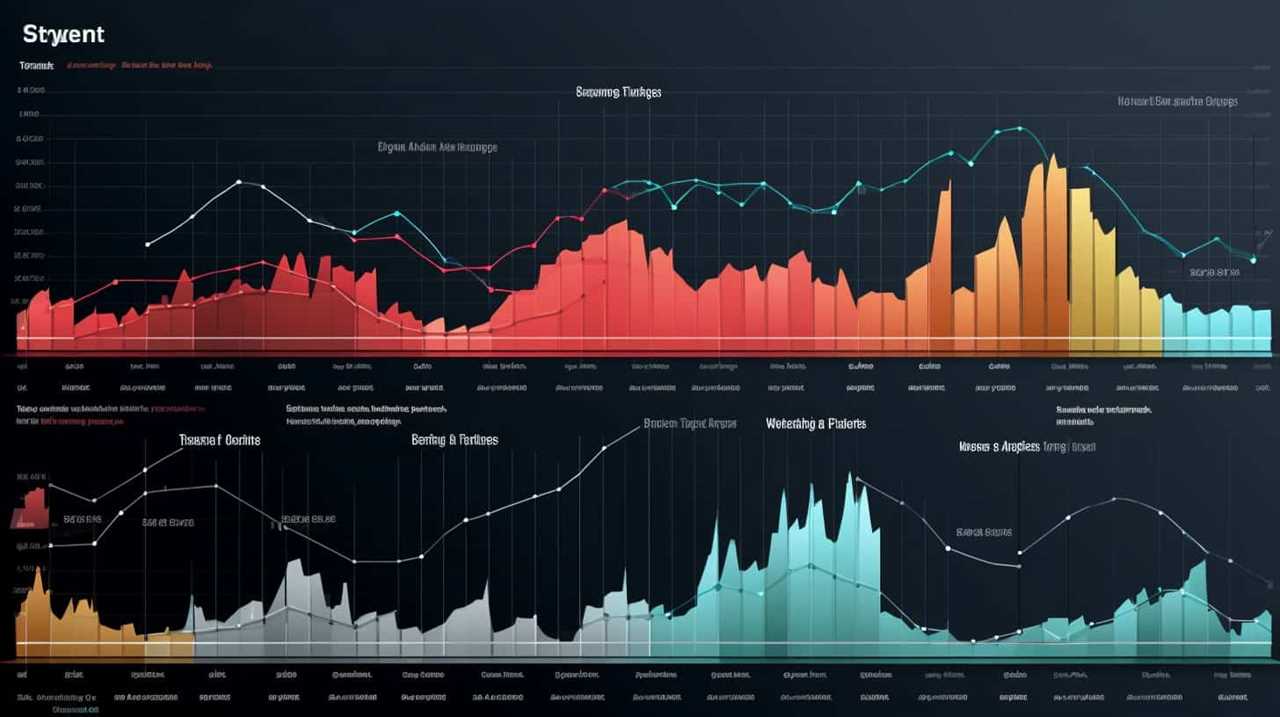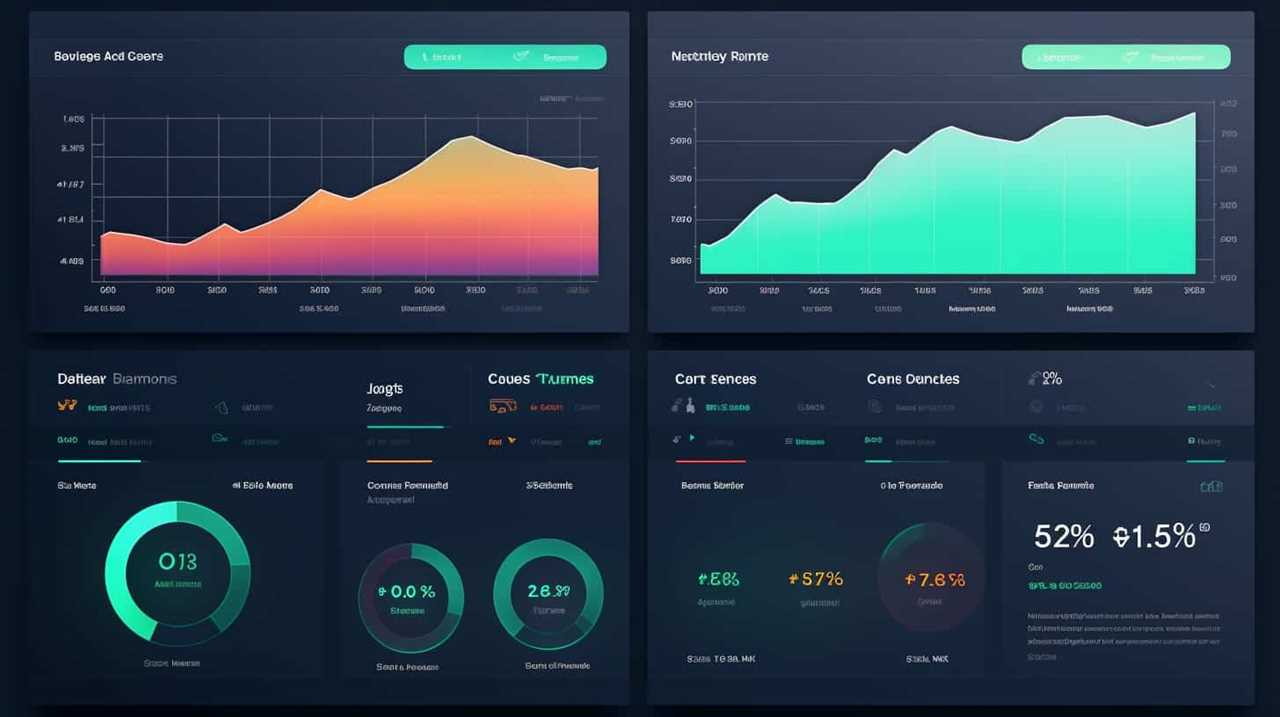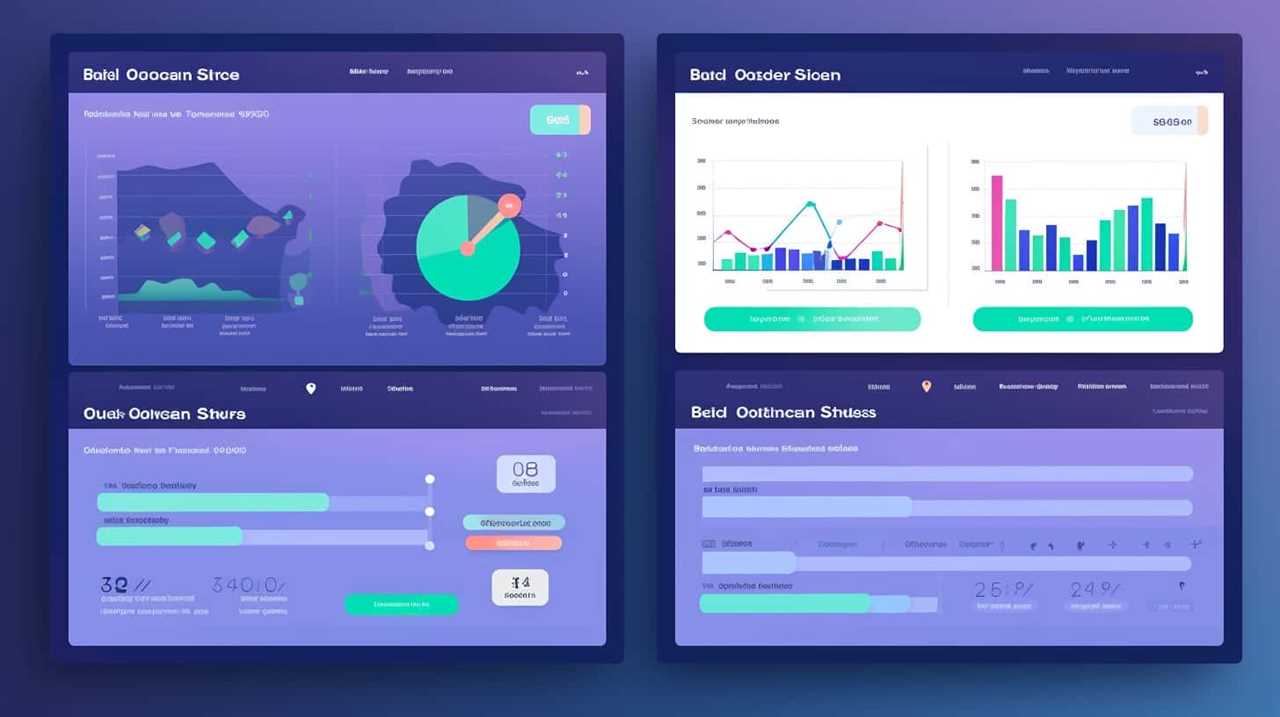Technical SEO
Will Seo Exist in 10 Years

Ladies and gentlemen, please secure your seatbelts as we get ready to set off on an exciting voyage into the future of SEO.
In the ever-changing digital landscape, we find ourselves asking, ‘Will SEO exist in 10 years?’ Well, fear not, for we have analyzed the trends, studied the data, and formulated an informed perspective.
Join us as we explore the evolution of search algorithms, the impact of voice search and artificial intelligence, and the rise of mobile optimization.
Get ready to master the SEO game of tomorrow!

Key Takeaways
- Search algorithms have evolved and now focus on user experience, quality content, and natural language processing.
- Voice search is growing and impacting SEO strategies, requiring targeting of specific long-tail keywords and optimization for featured snippets.
- Artificial Intelligence and Machine Learning are revolutionizing SEO by understanding user intent and delivering relevant results.
- Mobile optimization is crucial for online presence and accessibility, with effective mobile SEO strategies including responsive design, AMP implementation, and optimizing content for voice search queries.
The Evolution of Search Algorithms
In our exploration of the subtopic ‘The Evolution of Search Algorithms’, it’s important to consider the impact of advancements in technology on SEO practices.
The evolution of search algorithms has greatly influenced how websites are ranked and displayed in search engine results pages (SERPs). As technology continues to advance, search engines are becoming more sophisticated in understanding user intent and delivering relevant results. This has led to a shift in SEO strategies, with an increased focus on user experience, quality content, and natural language processing.
The future of keywords and content optimization lies in understanding the context and intent behind search queries, rather than simply focusing on specific keywords. As search algorithms continue to evolve, it’s crucial for SEO practitioners to adapt their strategies and stay informed about the latest advancements in order to maintain a competitive edge in the ever-changing digital landscape.
Voice Search and Its Impact on SEO
Our understanding of the impact of voice search on SEO practices will be greatly enhanced in the next 10 years. Voice assistants and natural language processing are revolutionizing the way people search for information.

Here are three key ways voice search is already impacting SEO:
- Long-tail keywords: Voice searches tend to be longer and more conversational, which means targeting specific long-tail keywords becomes crucial for SEO success.
- Featured snippets: Voice assistants often read out featured snippets as the answer to a user’s query. Optimizing content to appear in these snippets can significantly boost visibility and website traffic.
- Local search optimization: Voice searches are often location-specific, with users asking for nearby businesses or services. Optimizing for local SEO, including accurate business information and positive reviews, becomes essential for attracting voice search users.
As voice search continues to grow, SEO strategies will need to adapt to ensure websites remain visible and competitive in search engine results.
Artificial Intelligence and Machine Learning in SEO
Over the next 10 years, we’ll witness the integration of Artificial Intelligence (AI) and Machine Learning (ML) into SEO practices. AI and ML are revolutionizing the way SEO works, allowing for more efficient and effective strategies.
With AI, search engines can better understand user intent and deliver more relevant search results. ML algorithms analyze vast amounts of data to identify patterns and trends, enabling SEO professionals to optimize websites and content accordingly.

This technology also plays a crucial role in voice search, which is becoming increasingly popular. AI-powered voice assistants like Siri and Alexa rely on ML algorithms to interpret and respond to user queries.
As voice search continues to impact SEO, AI and ML will be essential tools for businesses to stay ahead and deliver the best user experience.
The Rise of Mobile Optimization
As we consider the future of SEO, it’s crucial to acknowledge the significant rise of mobile optimization. With the increasing use of smartphones and tablets, mobile devices have become the primary means of accessing the internet for many users.
As a result, businesses must prioritize implementing effective mobile SEO strategies to ensure their online presence remains relevant and accessible to a growing mobile audience. The future of SEO lies in embracing and adapting to the mobile-first approach, maximizing user experience, and staying ahead of the competition.

Mobile SEO Strategies
In the next decade, we’ll witness the continued growth and importance of mobile SEO strategies, as mobile optimization becomes increasingly vital in the digital landscape. As we look ahead to the future of mobile trends and mobile search trends, it’s clear that mobile SEO strategies will play a crucial role in driving organic traffic and improving user experience.
Here are three key mobile SEO strategies to consider:
- Responsive design: Creating a website that adapts seamlessly to different screen sizes and resolutions will ensure a positive user experience across all devices.
- Accelerated Mobile Pages (AMP): Implementing AMP can significantly improve page load speed, leading to higher engagement and lower bounce rates.
- Voice search optimization: With the rise of voice assistants, optimizing your content for voice search queries will become increasingly important.
With these mobile SEO strategies in place, businesses can stay ahead of the curve and maximize their online visibility.
But what does the future of mobile optimization hold?

Future of Mobile Optimization?
One key aspect of the future of mobile optimization is the increasing dominance of mobile devices in internet usage. As mobile technology continues to advance, more and more people are relying on their smartphones and tablets for accessing the internet. This shift in user behavior has significant implications for businesses and marketers. To stay ahead of the competition, it is crucial to understand the future trends and adapt mobile optimization strategies accordingly.
Here is a table highlighting some key future trends in mobile user behavior:
| Trend | Description |
|---|---|
| Mobile-first design | Designing websites and applications with a mobile-first approach to cater to mobile users |
| Voice search | The rising popularity of voice assistants and voice search capabilities on mobile devices |
| App indexing | Optimizing mobile apps to be indexed and ranked by search engines for increased visibility |
| Personalization | Providing personalized experiences to mobile users based on their preferences and behavior |
The Role of Social Media in SEO
Social media plays a crucial role in SEO, impacting the effectiveness of influencer marketing, algorithmic changes and updates, and user-generated content influence.
By leveraging social media platforms, businesses can tap into the power of influencers to amplify their brand message and reach a wider audience.

Additionally, algorithmic changes and updates in search engines often take into account social media signals, such as likes, shares, and comments, when determining search rankings.
Furthermore, user-generated content on social media platforms can greatly influence consumer decision-making, making it essential for businesses to actively engage and interact with their audience on these channels.
Influencer Marketing Impact
Our analysis reveals that a significant number of brands are leveraging the power of influencer marketing to enhance the impact of their SEO strategies. Influencer marketing has become a crucial component of digital marketing campaigns, and its integration with SEO is proving to be highly effective.
Here are three ways in which influencer marketing is making a significant impact on SEO:

- Increased brand visibility: Partnering with influencers allows brands to tap into their large and engaged social media following, leading to increased brand visibility and awareness.
- Improved organic search rankings: Influencer collaborations often result in high-quality backlinks, which are important for improving organic search rankings and driving traffic to a brand’s website.
- Enhanced content promotion: Influencers can help amplify content through their social media channels, reaching a wider audience and generating more engagement, shares, and ultimately, more traffic to a brand’s website.
As influencer marketing trends continue to evolve, brands need to develop effective influencer marketing strategies to stay ahead in the competitive SEO landscape.
Algorithmic Changes and Updates
Over the next decade, we will witness significant algorithmic changes and updates that will redefine the role of social media in SEO. These changes are driven by the continuous evolution of search engine algorithms and the increasing importance of social media platforms in shaping online conversations. As search engines become more sophisticated, they are placing greater emphasis on factors such as user engagement, social signals, and content quality. This means that SEO strategies must adapt to these algorithmic changes to remain effective. Social media platforms play a crucial role in SEO by providing opportunities for businesses to engage with their audience, build brand awareness, and generate valuable backlinks. By leveraging social media effectively, businesses can improve their visibility in search engine results and drive organic traffic to their websites.
To help you understand the evolving role of social media in SEO, here is a comparison table showcasing the current and future landscape:
| Current Landscape | Future Landscape |
|---|---|
| Social signals are considered as ranking factors. | Social signals will continue to be important, with increased emphasis on quality and authenticity. |
| Backlinks from social media platforms are valued. | Backlinks from highly authoritative social media accounts will carry more weight. |
| Social media profiles are included in search results. | Social media profiles will have a more prominent presence in search results. |
| User engagement metrics are monitored to assess content quality. | User engagement metrics will become even more critical in determining content relevance and quality. |
As the SEO landscape continues to evolve, businesses must stay updated with algorithmic changes and leverage social media platforms to enhance their SEO efforts. By embracing these changes and adapting their strategies accordingly, businesses can stay ahead in the ever-changing digital landscape.

User-Generated Content Influence
In the ever-evolving landscape of SEO, we recognize the significant influence of user-generated content on the role of social media. User-generated content refers to any form of content created by users, such as reviews, comments, and social media posts.
Here are three reasons why user-generated content is crucial in shaping SEO strategies:
- Authenticity: User-generated content provides an authentic perspective on products and services. Customers trust the opinions of their peers, making user-generated content a powerful tool for building credibility.
- Engagement: User-generated content encourages audience engagement, increasing brand visibility and reach. When users share, comment, or interact with content, it boosts organic reach and improves SEO rankings.
- Data Insights: Through content moderation and user-generated data analysis, businesses can gain valuable insights into customer preferences, behaviors, and trends. These insights can inform SEO strategies and drive targeted content creation.
As we explore the importance of user experience (UX) in SEO, let’s delve into how it complements the influence of user-generated content.
The Importance of User Experience (UX) in SEO
The importance of user experience (UX) in SEO cannot be overstated. User experience plays a critical role in determining the success of a website’s visibility and ranking on search engine results pages. When search engines evaluate websites, they consider factors such as page load speed, mobile-friendliness, and ease of navigation. A positive user experience not only keeps visitors engaged and encourages them to stay longer on a website, but it also signals to search engines that the website is valuable and relevant to users. To highlight the significance of user experience in SEO, let’s take a look at the following table:

| Factors | Importance in SEO |
|---|---|
| Page Load Speed | High |
| Mobile-Friendliness | High |
| Clear Navigation | High |
| Engaging Content | High |
As you can see, each factor plays a crucial role in ensuring a positive user experience, which ultimately leads to better SEO performance. Moving forward, it is essential to consider the future of keywords and content optimization.
The Future of Keywords and Content Optimization
As we look ahead to the future of keywords and content optimization, there are several key points that warrant our attention.
Firstly, the rise of voice search is already making a significant impact on SEO, as users increasingly rely on voice assistants to find information.
Secondly, with the advancement of artificial intelligence (AI), search engines are becoming smarter in understanding user intent and delivering relevant results.

Lastly, the concept of keywordless content optimization is gaining traction, as search engines evolve to understand context and meaning, allowing for more natural and engaging content.
These developments highlight the need for SEO strategies to adapt and embrace these emerging trends.
Voice Search Impact
How will voice search impact the future of keyword and content optimization?
Voice assistants have become an integral part of our lives, with smart speakers like Amazon Echo and Google Home gaining popularity. As more people rely on voice search, the way we optimize keywords and create content will need to evolve.

Here are three key ways voice search will impact the future of keyword and content optimization:
- Natural Language Processing: Voice search relies on natural language processing to understand and interpret user queries. This means that keywords will need to be more conversational and long-tail, reflecting how people actually speak.
- Featured Snippets: Voice search often provides users with concise answers directly from search results. Optimizing content for featured snippets will become crucial in capturing voice search traffic.
- Mobile Optimization: Voice search is predominantly used on mobile devices. Optimizing websites for mobile, including fast loading times and responsive design, will be essential for success in voice search.
AI and SEO
We believe AI will play a crucial role in the future of keyword and content optimization. As search algorithms continue to evolve, AI technologies will become increasingly important in helping businesses stay competitive in the digital landscape. AI-powered tools can analyze vast amounts of data, identify patterns, and make intelligent recommendations for optimizing keywords and content. This allows marketers to create more targeted and relevant content that resonates with their audience. To illustrate the potential impact of AI on SEO, consider the following table:
| Traditional SEO | AI-powered SEO |
|---|---|
| Manual keyword research | Automated keyword analysis |
| Manual content optimization | AI-driven content suggestions |
| Limited scalability | Enhanced scalability and efficiency |
| Time-consuming and labor-intensive | Time-saving and resource-efficient |
The future of search algorithms lies in harnessing the power of AI to improve keyword and content optimization, ultimately leading to better search engine rankings and increased organic traffic.
Keywordless Content Optimization?
Moving forward from AI and SEO, an intriguing aspect to consider is the concept of keywordless content optimization and its potential role in the future of SEO. As search engines continue to evolve, relying solely on keywords may no longer be sufficient to achieve optimal search engine rankings. Instead, content personalization and semantic search are becoming increasingly important factors in determining search results.

Here are three reasons why keywordless content optimization should be on every marketer’s radar:
- Enhanced user experience: By focusing on content that’s relevant and valuable to users, rather than just keyword-stuffed articles, we can create a more engaging and personalized experience for our audience.
- Better search engine understanding: Semantic search allows search engines to better understand the context and meaning behind content, enabling them to deliver more accurate search results.
- Long-term sustainability: As search algorithms continue to advance, keywordless content optimization provides a more future-proof strategy that aligns with the evolving needs of both users and search engines.
The Influence of Video and Visual Content on SEO
Taking into account the rapidly evolving digital landscape, it’s evident that video and visual content will continue to play a crucial role in shaping the future of SEO. In today’s digital age, where attention spans are short and competition is fierce, incorporating videos and visual elements into your content is essential for attracting and engaging your target audience.
Visual storytelling has become a powerful tool for brands to convey their message and evoke emotions in a more impactful way. Additionally, influencer collaborations have gained significant traction in recent years, with influencers leveraging their large following to promote brands and products through visually appealing content.
These collaborations not only boost brand visibility but also enhance SEO by increasing brand mentions, backlinks, and social media shares. Therefore, it’s imperative for businesses to prioritize video and visual content in their SEO strategy to stay relevant and competitive in the ever-changing digital landscape.

The Emergence of Local SEO Strategies
A growing number of businesses are incorporating local SEO strategies to enhance their online presence and attract customers in their specific geographical areas. Local SEO focuses on optimizing a website’s visibility in local search results, making it easier for potential customers to find businesses in their vicinity.
Here are three key benefits of implementing local SEO strategies:
- Increased visibility: By optimizing local listings and directories, businesses can improve their visibility in local search results. This means that when someone searches for a particular product or service in their area, businesses with strong local SEO will have a higher chance of appearing in the top results.
- Geolocation targeting: Local SEO allows businesses to target customers based on their location. This means that businesses can tailor their marketing efforts to specific geographical areas, ensuring that their message reaches the right audience at the right time.
- Improved customer trust: Local SEO strategies often involve obtaining positive reviews from local customers. By showcasing these reviews, businesses can build trust and credibility with potential customers, leading to increased conversions and customer loyalty.
The Integration of SEO With Other Marketing Channels
Continuing our discussion on the emergence of local SEO strategies, it is increasingly common for businesses to integrate SEO with other marketing channels to maximize their online visibility and reach a wider audience. This integration allows companies to leverage the strengths of different marketing channels and create a cohesive online presence. One effective way to integrate SEO is through mobile advertising, which targets users on their mobile devices and takes advantage of the growing number of mobile searches. Email marketing can also be combined with SEO efforts to drive traffic to a website and nurture leads. By optimizing email content with relevant keywords and links, businesses can improve their search rankings and increase website visits. When SEO is integrated with mobile advertising and email marketing, companies can achieve a synergistic effect that boosts their online visibility, reaches a wider audience, and drives more traffic to their websites.
| Marketing Channel | Integration with SEO |
|---|---|
| Mobile advertising | Optimize mobile ads with relevant keywords |
| Email marketing | Optimize email content with keywords |
Frequently Asked Questions
How Has the Use of Virtual Reality and Augmented Reality Affected Seo?
Virtual reality and augmented reality have revolutionized SEO. They have allowed us to create immersive experiences and enhance user engagement. As technology continues to advance, SEO will adapt and thrive in the virtual world.

What Are the Key Factors to Consider When Optimizing for Voice Search?
When optimizing for voice search, we must consider key factors such as natural language processing and keyword research. By understanding how people speak and what they’re searching for, we can create effective strategies to stay ahead in the SEO game.
How Has the Increasing Popularity of Social Media Influencers Impacted SEO Strategies?
The increasing popularity of social media influencers has had a significant impact on SEO strategies. As social media algorithms evolve, influencer marketing becomes crucial for brands to enhance their online visibility and reach their target audience effectively.
What Role Does Blockchain Technology Play in the Future of Seo?
Blockchain technology has significant implications for the future of SEO. It has the potential to revolutionize data security, transparency, and trust in the industry. Incorporating blockchain into SEO strategies can enhance website ranking and user experience.
How Can Chatbots and Ai-Powered Customer Service Impact SEO and User Experience?
Chatbots and AI-powered customer service have the potential to greatly impact SEO and user experience. By providing instant responses and personalized assistance, these technologies can improve website rankings and enhance customer satisfaction.

Conclusion
In conclusion, the future of SEO looks promising and ever-evolving.
With the continuous advancements in search algorithms, the rise of voice search and artificial intelligence, the importance of mobile optimization, and the integration of SEO with other marketing channels, SEO is set to remain a crucial aspect of digital marketing.
While the landscape may change, the need for strategic and data-driven approaches to optimize content and keywords will always be essential for businesses to stay competitive in the online world.
Technical SEO
Optimize Your Site with How to do SEO for Ecosia
Discover proven strategies and tips on how to do SEO for Ecosia to boost your website’s visibility and support eco-friendly initiatives.

In today’s digital world, search engines play a vital role in connecting businesses with potential customers. When it comes to search engine optimization (SEO), Google is often the go-to platform for marketers. But did you know that there is another search engine that offers a unique opportunity to reach a niche audience of environmentally conscious users?
Meet Ecosia, an eco-conscious search engine that not only delivers relevant search results but also focuses on sustainability and reforesting initiatives. With every search made on Ecosia, revenue from advertising is used to fund tree-planting projects around the world. Since its inception in 2009, Ecosia has gained popularity among individuals who want to make a positive impact on the environment through their online activities.
In this article, we will explore how you can optimize your website for Ecosia search to connect with the growing community of eco-conscious users. We will provide you with practical tips and best practices to improve your visibility on this unique platform.
Key Takeaways:
- Optimizing your website for Ecosia can help you reach environmentally conscious users.
- Ecosia is a search engine that focuses on sustainability and reforesting initiatives.
- By utilizing SEO strategies specific to Ecosia, you can improve your visibility and connect with a niche audience.
- Ecosia uses the revenue generated from advertising to fund tree-planting projects around the world.
- Stay tuned to discover how you can optimize your website for Ecosia and make a positive impact on the environment.
What is the Ecosia search engine?
Ecosia is a search engine that was established in 2009 with a mission to combat climate change and promote reforestation. It operates as a certified B-Corp and non-profit organization. Ecosia uses the revenue generated from advertising to fund tree-planting projects and sustainability initiatives around the world. It has gained popularity among eco-conscious users who want to make a positive impact on the environment through their online activities.
If you’re concerned about the environmental impact of traditional search engines, Ecosia provides a greener alternative. By using Ecosia as your search engine, you can contribute to global reforestation efforts without sacrificing the convenience and accuracy of search results. Not only does Ecosia prioritize privacy, but it also ensures that every search you make helps plant trees in various regions, restoring biodiversity and fighting climate change.
Did you know that every search made on Ecosia helps fund tree-planting projects around the world? When you use Ecosia as your search engine, you actively participate in reforestation efforts. So, why not make a positive impact on the environment while searching for information or products online? Switching to Ecosia is a simple, eco-conscious choice with real-world benefits.
How does Ecosia work?
Ecosia operates by using the revenues from search ads to plant trees. When you perform a search on Ecosia, the search ads generate income, a portion of which is used by Ecosia to fund tree-planting projects. The more searches made, the more trees can be planted. Ecosia has partnered with various tree-planting organizations and projects worldwide to ensure that the reforestation initiatives are effective and have a lasting impact on local communities and ecosystems.
“Ecosia operates with a bold mission to help restore our planet while providing an exceptional search experience. Every search has the power to make a difference in the fight against climate change.”
Why optimize your website for Ecosia?
Optimizing your website for Ecosia is a strategic move for eco-friendly and ethical businesses. While Ecosia may have a smaller market share compared to Google, it has a dedicated user base that values sustainability and environmental initiatives. By optimizing your site for Ecosia, you can connect with like-minded customers who prioritize eco-consciousness in their online activities.
One of the key reasons to optimize for Ecosia is that it can improve your visibility not only on Ecosia itself, but also on other search engines that use Bing’s infrastructure, such as Yahoo and DuckDuckGo. By implementing an effective SEO strategy tailored to Ecosia’s search preferences, you can potentially reach a larger audience across multiple platforms.
Ecosia’s commitment to tree-planting and sustainability resonates with environmentally conscious individuals. By aligning your website with Ecosia’s values and optimizing for relevant keywords related to sustainability and tree-planting, you can attract users who are actively seeking eco-friendly products, services, and information.
Additionally, optimizing for Ecosia can help demonstrate your brand’s commitment to social and environmental responsibility. By prioritizing ethical practices and showcasing your participation in eco-friendly initiatives, you can build trust and credibility with your audience.
Optimizing your website for Ecosia is not only a smart business move, but also a way to contribute to a more sustainable future. By connecting with eco-conscious users and supporting Ecosia’s tree-planting efforts, you can make a positive impact on the environment while strengthening your online presence.

How to optimize your website for Ecosia
Optimizing your website for Ecosia involves several key strategies that can improve your visibility and search rankings on the platform. By implementing these techniques, you can better connect with environmentally conscious users and benefit from Ecosia’s eco-friendly search engine. Here are some essential steps to optimize your website for Ecosia:
1. Utilize Bing Webmaster Tools
Make use of Bing Webmaster Tools to monitor and enhance your website’s performance on Ecosia. This powerful tool allows you to submit page updates, register your sitemap, and analyze the search terms and backlinks associated with your site. By leveraging Bing Webmaster Tools, you can identify areas for improvement and optimize your website accordingly.
2. Conduct Keyword Research Tailored to Ecosia
Perform thorough keyword research specific to Ecosia’s search preferences. This will help you discover the key terms and phrases that resonate with Ecosia’s user base. Consider using Ecosia’s keyword research tool and other SEO resources to identify the most relevant and high-performing keywords for your website.
3. Implement a Strong Backlink Strategy
Developing a robust backlink strategy is crucial when optimizing for Ecosia. Seek out high-quality backlinks from reputable websites that align with Ecosia’s eco-conscious values. Building a network of relevant and authoritative backlinks can contribute to your website’s visibility and attract organic traffic from Ecosia users.
4. Optimize Your Website’s Content for Location-Based Searches
Ecosia places a strong emphasis on location-based searches, so it’s important to optimize your website’s content accordingly. Incorporate location-specific keywords and phrases into your website’s copy, meta tags, and headings to improve your rankings for local searches on Ecosia.
5. Ensure Overall Website Optimization
Implement general website optimization techniques to improve your rankings on Ecosia. Make sure your website is mobile-friendly, loads quickly, and has a smooth user experience. Optimize your page titles, meta descriptions, and headings to align with Ecosia’s SEO ranking factors. Furthermore, prioritize content quality and relevance to cater to the preferences of Ecosia’s eco-conscious user base.

| SEO Ranking Factors for Ecosia | Importance |
|---|---|
| Keyword Research | High |
| Backlink Strategy | High |
| Website Optimization | High |
| Location-Based Searches | Medium |
Remember, optimizing your website for Ecosia requires a comprehensive approach that encompasses technical optimization, relevant content, and ethical link building. By following these strategies, you can enhance your website’s visibility on Ecosia and attract valuable organic traffic from eco-conscious users.
Using Bing webmaster tools
Bing Webmaster Tools is an essential resource for optimizing your website for Ecosia and other search engines that rely on Bing’s infrastructure. By leveraging the features provided by Bing Webmaster Tools, you can ensure that your website is fully optimized for Ecosia’s search algorithm, improving your visibility and search rankings.
Analyze Your Search Terms
One of the key features of Bing Webmaster Tools is the ability to analyze the search terms that lead users to your website. By understanding the keywords and phrases users are searching for, you can tailor your content to match their intent and preferences. This optimization can help drive more targeted traffic to your site through Ecosia and other search engines.
Monitor and Improve Your Backlinks
Backlinks play a crucial role in search engine optimization, including Ecosia. Bing Webmaster Tools allows you to analyze and monitor your backlinks, ensuring they are relevant, high-quality, and helping to increase your website’s authority. By regularly reviewing and improving your backlink profile, you can enhance your site’s visibility on Ecosia and other search engines.
Submit Your Sitemap
A sitemap is a file that lists all the pages on your website, helping search engines like Ecosia understand your site’s structure and content. Bing Webmaster Tools enables you to submit your sitemap, ensuring that Ecosia and other search engines can easily crawl and index your webpages. This helps improve your website’s visibility and search rankings.
Manually Submit Page Updates
Bing Webmaster Tools allows you to manually submit page updates, ensuring that any changes or additions to your website are quickly indexed by Ecosia and other search engines. By informing search engines of these updates, you can expedite the process of getting your new content discovered, leading to improved visibility and organic search traffic.
| Benefits of Bing Webmaster Tools | Actions to Take |
|---|---|
| Access detailed insights about your website’s performance on Ecosia | Analyze search terms and optimize your content accordingly |
| Monitor and improve your backlink profile | Ensure your backlinks are high-quality and relevant |
| Submit your sitemap for better indexation | Help search engines understand your site’s structure |
| Manually submit page updates for faster indexing | Notify search engines of new content and changes |
By utilizing Bing Webmaster Tools, you can optimize your website for Ecosia and enhance your visibility on the eco-conscious search engine. Take advantage of the features provided to analyze search terms, monitor backlinks, submit your sitemap, and manually submit page updates. These actions will help ensure that your website is performing optimally on Ecosia and attracting targeted organic traffic.

Get Started with Bing Webmaster Tools Today!
IndexNow
If you want to improve your website’s visibility on Ecosia, there’s a convenient tool you can utilize: IndexNow. IndexNow is a powerful WordPress plugin that automates the process of indexing your website’s page updates on the Bing search engine. By using IndexNow, you can ensure that search engines always have the latest version of your content, benefiting your visibility on Ecosia as well. This plugin eliminates the need for manual page submissions and streamlines the process of getting your website content indexed on Ecosia and other search engines that utilize Bing’s infrastructure.

With IndexNow, any updates you make to your website will be automatically indexed by Bing, including those that directly impact your visibility on Ecosia. This means that you can focus on creating and updating your content without worrying about submitting individual pages for indexing. By leveraging the capabilities of IndexNow, you can improve your overall visibility on Ecosia and increase your chances of connecting with environmentally conscious users who utilize the search engine.
Not only does IndexNow save you time and effort, but it also ensures that your website is always up-to-date in search results. This is crucial for keeping your content relevant and accessible to users on Ecosia. By staying current and providing users with the latest information, you can enhance your website’s credibility and attract more organic traffic from Ecosia search results.
Bing Search Index
IndexNow works by automatically notifying Bing’s search index when you make updates to your website. This ensures that your content is crawled and indexed promptly, maximizing your visibility on search engines, including Ecosia. By eliminating manual submissions and streamlining the process of indexing updates, IndexNow helps you keep up with the fast-paced nature of online content and stay ahead of the competition.
“IndexNow takes the hassle out of ensuring your website is indexed on search engines. With this powerful WordPress plugin, you can focus on creating great content while leaving the task of indexing to automation.”
If you’re looking to optimize your website for Ecosia and improve your visibility on the platform, IndexNow is a must-have tool. By automating the indexing process and ensuring that search engines are always up-to-date with your latest content, IndexNow gives you a competitive advantage in reaching environmentally conscious users who utilize Ecosia for their online searches.
| Benefits of IndexNow | How it Works |
|---|---|
| Saves time and effort | Automatically notifies Bing’s search index of your website updates |
| Ensures your website is always up-to-date in search results | Streamlines the process of indexing updates |
| Improves overall visibility on Ecosia and other search engines | Maximizes your chances of connecting with environmentally conscious users |
Why does my website not show on Bing?
If you’re wondering why your website is not appearing on Bing’s index, there may be specific issues hindering its indexation. To increase your chances of being indexed on Bing, and consequently on Ecosia, it is important to adhere to Bing Webmaster Guidelines. These guidelines provide valuable insights and recommendations for optimizing your website for Bing.
One crucial step is to submit a sitemap to Bing. A sitemap is a file that contains a list of all the pages on your website, helping search engines understand its structure and hierarchy. By submitting a sitemap, you enable Bing to crawl and index your website more efficiently.
Another essential aspect is ensuring that all of your website’s pages have a set meta description. Meta descriptions are concise summaries that appear in search engine results, providing users with a preview of your website’s content. Craft compelling meta descriptions that accurately reflect the page’s content and incorporate relevant keywords.
Additionally, you should address any issues flagged in the site scan feature of Bing Webmaster Tools. This feature helps identify potential problems with your website, such as broken links, missing metadata, or other issues that might negatively impact its indexability.
In addition to following Bing Webmaster Guidelines, gaining inbound links from other reputable websites can boost your chances of being indexed on Bing. These inbound links serve as signals of credibility and can positively influence your website’s visibility in search results.
Furthermore, utilizing crawl optimization settings provided by SEO plugins such as Yoast SEO can enhance your website’s indexability and visibility on Bing. These settings allow you to customize how search engines crawl and interpret your website, ensuring optimal indexing.
By addressing these factors and diligently optimizing your website according to Bing guidelines, you can increase the likelihood of your website showing up on Bing’s index and, consequently, on Ecosia.
More SEO tips
In addition to the strategies mentioned earlier, there are several additional SEO tips that can help optimize your website for Ecosia.
- Optimize your page titles and meta descriptions: Ensure that your page titles and meta descriptions contain relevant keywords that accurately describe the content of your web pages. This will increase the chances of your website appearing in relevant search results on Ecosia.
- Focus on gaining inbound links from respected sources: Building a strong network of inbound links from reputable websites can significantly improve your website’s SEO ranking on Ecosia. Seek out opportunities to collaborate with trusted industry influencers or feature your content on authoritative sites in your niche.
- Publish content on social media: Sharing your website content on social media platforms can generate additional visibility and traffic to your site. Implement a solid social media strategy that encourages sharing and engagement to improve your website’s visibility on Ecosia.
- Keep your website’s content up-to-date: Regularly updating your website with fresh, relevant content signals to search engines like Ecosia that your website is active and provides value to users. This can positively impact your SEO rankings and attract more organic traffic.
- Follow SEO best practices: Adhering to established SEO best practices, such as using clean URLs, optimizing images, and improving website speed, can enhance your website’s overall optimization for Ecosia. Keep yourself informed about the latest SEO trends and implement them on your site to stay ahead of the competition.
By implementing these additional SEO tips, you can further optimize your website for Ecosia and improve your search engine rankings, visibility, and organic traffic.
Take a look at the table below for a quick overview of these SEO tips:
| SEO Tips | Description |
|---|---|
| Optimize page titles and meta descriptions | Include relevant keywords in your page titles and meta descriptions to improve visibility in search results |
| Focus on inbound links | Build a network of inbound links from reputable sources to improve your website’s authority and SEO ranking |
| Publish content on social media | Share your website content on social media platforms to increase visibility and encourage sharing |
| Keep your website up-to-date | Regularly update your website with fresh, relevant content to signal to search engines that your site is active |
| Follow SEO best practices | Stay informed about the latest SEO trends and implement best practices on your website |

Conclusion
Optimizing your website for Ecosia, the eco-conscious search engine, is a smart strategy for businesses prioritizing sustainability. While Google dominates the search market, Ecosia offers a platform that connects you with like-minded, environmentally conscious customers.
By investing time and effort into optimizing for Ecosia, you not only improve your visibility on the platform but also support reforesting initiatives around the world. Ecosia utilizes its revenue generated from advertising to fund tree-planting projects and other sustainability initiatives, making it an ethical choice for businesses aligned with eco-consciousness.
To optimize for Ecosia, make use of Bing Webmaster Tools to monitor and improve your website’s performance. This tool allows you to submit page updates, register a sitemap, and analyze search terms and backlinks specific to Ecosia. Conduct thorough keyword research tailored to Ecosia’s search preferences and implement a strong backlink strategy to enhance your rankings. Additionally, optimizing your website’s content for location-based searches and utilizing tools like IndexNow can further improve your visibility on Ecosia.
Regularly monitor your performance through Bing Webmaster Tools and stay up-to-date with SEO best practices to ensure ongoing success on the platform. Remember, optimizing for Ecosia not only benefits your business but also contributes to a more sustainable future.

| Ecosia Optimization Benefits | Sustainability Focus | Reforesting Initiatives | Alternative Search Platform |
|---|---|---|---|
| Increase visibility on Ecosia | Connect with eco-conscious customers | Support tree-planting projects | Diversify your search engine presence |
| Improve website’s eco-friendly image | Promote sustainable and ethically driven business practices | Fund sustainability initiatives | Reach users seeking eco-friendly alternatives |
| Enhance brand reputation | Show commitment to environmental conservation | Contribute to global reforesting efforts | Tap into a niche market |
Further reading
If you’re interested in learning more about Ecosia and sustainable search engine optimization, there are several resources you can explore to deepen your understanding and discover additional strategies for optimizing your website for Ecosia.
1. Ecosia: Visit the official Ecosia website to learn more about their mission, tree-planting projects, and the impact they are making on the environment.
2. Ecosia Blog: Check out the Ecosia blog for articles and updates about their sustainability initiatives, tips for using the search engine effectively, and other eco-friendly SEO strategies.
3. Search Engine Journal: Search Engine Journal is a reputable source for SEO insights and industry updates. They often feature articles on sustainable search engines and optimization techniques, including strategies specific to Ecosia.
By exploring these resources, you can gain a deeper understanding of Ecosia, learn about effective optimization techniques, and discover eco-friendly SEO strategies that can help improve your visibility on the platform.
FAQ
How do I optimize my website for Ecosia?
What is the Ecosia search engine?
Why should I optimize my website for Ecosia?
How do I use Bing Webmaster Tools to optimize my website for Ecosia?
What is IndexNow?
Why is my website not showing up on Bing’s index?
What are some additional SEO tips for optimizing my website for Ecosia?
Why should I optimize my website for Ecosia?
Where can I find further reading on Ecosia and sustainable search engine optimization?
Technical SEO
Why Is My Seo Not Improving

Feeling exasperated by your SEO endeavors? We empathize with your situation. Regardless of the relentless effort we put in, our SEO outcomes have been disappointing.
But fear not, fellow SEO enthusiasts! In this article, we’ll uncover the reasons why our SEO isn’t improving. From technical issues to inadequate keyword research, we’ll delve into the nitty-gritty of what’s holding us back.
So grab a cup of coffee and join us on this quest for SEO mastery.
Key Takeaways
- Website speed optimization is crucial for improving SEO performance.
- Thorough keyword research and optimization are essential for driving organic traffic to the website.
- A well-structured and easy-to-navigate website enhances user satisfaction and improves SEO.
- Creating high-quality, relevant, and valuable content is necessary for improved SEO rankings.
Technical Issues Affecting SEO Performance
Technical issues can significantly impact our SEO performance. One of the key technical factors that affect SEO is website speed. Search engines prioritize websites that load quickly because users value fast-loading pages. Slow loading times can lead to higher bounce rates and lower search engine rankings. Therefore, optimizing website speed is crucial for improving SEO.

Another important technical aspect is mobile optimization. With the increasing use of mobile devices, search engines now prioritize mobile-friendly websites. Websites that aren’t optimized for mobile may experience lower rankings and reduced visibility in search results.
To ensure optimal SEO performance, it’s essential to address technical issues such as website speed and mobile optimization. By focusing on these factors, we can enhance our website’s visibility and improve overall SEO results.
Now, let’s explore another crucial aspect of SEO – inadequate keyword research and optimization.
Inadequate Keyword Research and Optimization
To address the issue of inadequate keyword research and optimization, we must understand the importance of selecting the right keywords to improve our SEO performance. A solid keyword strategy is crucial for driving organic traffic to our website.

It involves conducting thorough competitor analysis to identify the keywords they’re targeting and understanding the search volume and competitiveness of those keywords. By analyzing our competitors, we can gain insights into their successful SEO tactics and identify opportunities to optimize our own website.
Inadequate keyword research can lead to targeting keywords with low search volume or high competition, resulting in poor visibility in search engine rankings. Therefore, investing time and effort into comprehensive keyword research and optimization is essential for improving our SEO performance and driving more targeted traffic to our website.
Poor Website Structure and Navigation
When it comes to improving our SEO, one common issue that can hinder our progress is having a poor website structure and navigation.
The design and layout of our website play a crucial role in providing a seamless user experience. A well-structured and easy-to-navigate website not only enhances user satisfaction but also helps search engines crawl and index our pages more efficiently.

A poorly designed website with complex navigation can confuse users and make it difficult for them to find the information they’re looking for. This can lead to high bounce rates and negatively impact our SEO efforts.
To ensure optimal website design and user experience, we should focus on organizing our content logically, using clear and descriptive URLs, and implementing user-friendly navigation menus. By addressing these issues, we can lay a strong foundation for our SEO strategy.
However, a poor website structure and navigation aren’t the only factors that can hinder our SEO progress. In the next section, we’ll discuss the importance of high-quality and relevant content.
Lack of High-Quality and Relevant Content
When it comes to SEO, the quality of your content matters. High-quality content not only attracts users, but it also helps search engines understand the relevance of your website.

In order to improve your SEO, you need to focus on creating valuable and relevant content that meets the needs of your target audience.
Content Quality Matters
We need more high-quality and relevant content to improve our SEO. Content creation is a critical aspect of any SEO strategy. Here are two reasons why content quality matters:
- Better User Engagement: High-quality content that’s informative, engaging, and well-written keeps users on our website longer. It provides value to users and encourages them to spend more time exploring our site. This increases user engagement metrics, such as time on page and bounce rate, which are important factors in SEO ranking algorithms.
- Improved Search Visibility: When our content is relevant and addresses the needs of our target audience, it’s more likely to rank higher in search engine results pages (SERPs). Search engines prioritize content that’s valuable, authoritative, and trustworthy. By creating high-quality content, we can increase our chances of ranking higher for relevant keywords and attracting organic traffic.
Relevance Attracts Users
To attract more users and improve our SEO, it’s crucial to address the lack of high-quality and relevant content.
User engagement and social media impact are key factors in attracting and retaining users. High-quality content that’s relevant to the target audience not only increases user engagement but also encourages them to stay on our website longer.

By providing valuable and informative content, we can establish ourselves as an authority in our industry and build trust with our users. This, in turn, will lead to increased user engagement, higher conversion rates, and ultimately improved SEO rankings.
To achieve this, we need to conduct thorough keyword research, optimize our content for search engines, and consistently produce high-quality and relevant content that resonates with our target audience.
SEO Needs Valuable Content
Addressing the lack of high-quality and relevant content is crucial for improving our SEO. Content optimization for SEO plays a vital role in attracting organic traffic to our website. To optimize our content, we need to focus on the following:
- Keyword research: Identifying the right keywords helps us create content that aligns with what our target audience is searching for.
- On-page optimization: Optimizing title tags, meta descriptions, headings, and URL structures ensures that search engines can understand the content and rank it appropriately.
Additionally, the importance of user engagement in SEO can’t be overstated. Engaging content that provides value to users encourages them to spend more time on our website, reducing bounce rates and increasing conversions. By creating high-quality and relevant content, we can improve our SEO performance and provide a better user experience.

As we address the issue of lack of high-quality and relevant content, it’s also important to consider the impact of insufficient backlinks and off-page optimization on our SEO.
Insufficient Backlinks and Off-Page Optimization
When it comes to SEO, one of the key factors that can hinder improvement is the lack of quality backlinks. Without a strong network of backlinks from authoritative and relevant websites, search engines may not view your site as trustworthy or credible.
Additionally, ignoring off-page optimization strategies, such as social media promotion and guest blogging, can further contribute to the insufficiency of backlinks and hinder your SEO progress.
To improve your SEO, it’s crucial to prioritize acquiring high-quality backlinks and implementing effective off-page optimization techniques.

Lack of Quality Backlinks
We have noticed a significant lack of quality backlinks in our SEO strategy, resulting in insufficient backlinks and suboptimal off-page optimization. This is a critical issue that needs to be addressed promptly in order to improve our SEO performance.
The absence of quality backlinks hinders our website’s authority and credibility in the eyes of search engines, which ultimately affects our rankings and visibility. To rectify this, we need to implement effective link building techniques such as guest posting on reputable websites, which can provide valuable backlinks and drive targeted traffic to our site.
Additionally, we should explore other off-page optimization strategies such as social bookmarking, directory submissions, and influencer outreach to further enhance our online presence and authority.
Failing to address this lack of quality backlinks will result in missed opportunities for higher rankings and increased organic traffic.

Now, let’s delve into another critical issue: ignoring off-page optimization.
Ignoring Off-Page Optimization
To improve our SEO performance, it’s crucial that we not ignore off-page optimization, especially when it comes to addressing insufficient backlinks and off-page optimization.
Off-page optimization refers to activities that take place outside of our website but still have a significant impact on our search engine rankings. One key aspect of off-page optimization is building high-quality backlinks. These backlinks serve as a signal to search engines that our website is trustworthy and authoritative. Implementing effective link building strategies can help us obtain these valuable backlinks.
Additionally, engaging in social media activities can also contribute to off-page optimization. By actively participating in social media platforms and promoting our content, we can increase our online visibility and drive more traffic to our website.

Ignoring off-page optimization can hinder our SEO efforts and prevent us from achieving higher rankings in search engine results.
Failure to Track and Analyze SEO Metrics
One common reason for a lack of improvement in our SEO is a failure to track and analyze the important metrics.
Tracking the effectiveness of our SEO efforts is crucial for understanding what’s working and what needs improvement. It allows us to identify trends, measure the impact of our strategies, and make data-driven decisions.
Analyzing data provides valuable insights into the performance of our website, keywords, and content. By examining metrics such as organic traffic, bounce rate, and conversion rate, we can determine which areas require optimization and prioritize our efforts accordingly.

Additionally, tracking and analyzing SEO metrics enable us to compare our performance against competitors and identify opportunities for growth.
Neglecting this crucial step hinders our ability to make informed decisions and achieve the desired results.
Frequently Asked Questions
How Long Does It Usually Take to See Improvements in SEO Performance?
On average, it takes time to see improvements in SEO performance due to various factors. Factors affecting SEO improvements include website optimization, content quality, backlinks, competition, and search engine algorithm updates.
Can I Improve My Website’s SEO Without Focusing on Keyword Optimization?
Improving website SEO doesn’t solely rely on keyword optimization. Alternative strategies, such as content optimization, can greatly impact SEO performance. By focusing on creating high-quality, relevant content, we can enhance our website’s visibility and attract organic traffic.

Are There Any Tools or Resources Available to Help Me Track and Analyze My SEO Metrics?
We found that using SEO metrics tracking and SEO analysis tools can help us identify areas for improvement. By analyzing data and making strategic adjustments, we can optimize our SEO efforts for better results.
Is It Necessary to Have a High Number of Backlinks for Good SEO Performance?
Having a high number of backlinks is not the sole factor for good SEO performance. Backlink quality and effective link building strategies are more important in improving SEO.
What Are Some Common Technical Issues That Can Negatively Affect SEO Performance?
Common technical issues affecting SEO include broken links, slow page load times, and improper URL structures. To fix these problems, optimize your website’s code, update outdated plugins, and conduct regular site audits.
Conclusion
In conclusion, it seems that despite our best efforts, our SEO performance continues to lag behind. It’s almost amusing how technical issues, inadequate keyword research, poor website structure, lack of high-quality content, insufficient backlinks, and failure to track metrics all conspire against our quest for online visibility.

It’s like a strategic game, where every move should be carefully calculated and executed flawlessly. Alas, it seems we still have much to learn and improve upon in the intricate world of SEO.
Technical SEO
3 Elite Local SEO Services to Optimize Your Map Presence

Seeking to enhance your digital visibility? We have you covered!
In this article, we’ll be diving into three elite local SEO services that will optimize your map presence.
With our expertise in local business listing optimization, review management and generation, and location-based keyword targeting, we’ll help you dominate the local search results.
Don’t miss out on the opportunity to master your online presence and attract more customers.

Let’s get started!
Key Takeaways
- Local business listing optimization is essential for enhancing map presence and improving search engine rankings.
- Managing and responding to customer feedback promptly can help generate positive reviews and build trust and credibility.
- Incorporating location-specific keywords in website content and meta tags can increase visibility in local search results and attract a highly targeted audience.
- Map presence and organic search results work together to drive customer engagement and increase website traffic.
Local Business Listing Optimization
To enhance your map presence, we prioritize local business listing optimization by ensuring accurate and comprehensive information.
Local business citation management plays a crucial role in this process, as it involves managing and updating your business information across various online directories and platforms.
By consistently monitoring and maintaining your citations, we can ensure that your business is accurately represented online, which boosts your visibility in local search engine marketing.

Our team of experts will work diligently to optimize your business listings by providing accurate and up-to-date information, such as your business name, address, phone number, and website. This won’t only improve your search engine rankings but also enhance customer trust and credibility.
With our local business listing optimization services, you can maximize your map presence and attract more potential customers to your business.
Now, let’s move on to the next crucial aspect of your online reputation: review management and generation.
Review Management and Generation
Now, let’s delve into the important aspect of managing and generating reviews to further enhance your online reputation and map presence.

Customer engagement is crucial for the success of any business, and online reviews play a significant role in building trust and credibility with potential customers.
Effective review management involves monitoring and responding to customer feedback promptly. This demonstrates your commitment to customer satisfaction and shows that you value their opinions.
Generating positive reviews can be achieved through various strategies, such as encouraging satisfied customers to leave reviews, providing exceptional service, and addressing any negative feedback promptly and professionally.
Online reputation management is a critical component of your overall marketing strategy, as it directly impacts your visibility and credibility in local searches.

Location-Based Keyword Targeting
Continuing from our discussion on review management and generation, let’s now explore the powerful strategy of location-based keyword targeting to further optimize your map presence.
This technique involves incorporating keywords that are specific to your target location, increasing the chances of your business appearing in local search results. By utilizing geo-targeted advertising strategies and location-based content marketing, you can attract a highly targeted audience that’s more likely to convert into customers.
Here are two key benefits of location-based keyword targeting:
- Increased visibility: By including location-specific keywords in your website content, meta tags, and business listings, you can improve your chances of appearing in local search results, thus increasing your visibility to potential customers in your area.
- Higher conversion rates: When you incorporate location-based keywords, you attract customers who are actively searching for products or services in your area. This leads to higher conversion rates as these individuals are more likely to make a purchase or visit your physical store.
Frequently Asked Questions
How Long Does It Typically Take to See Results From Local Business Listing Optimization?
It typically takes time to see results from local business listing optimization. Monitoring and tracking our local SEO efforts is important. When choosing a local SEO service provider, key factors to consider include their expertise and track record.

Are There Any Specific Strategies or Techniques for Generating Positive Online Reviews?
When it comes to generating online reviews, there are several best practices to consider. One effective strategy is to leverage customer testimonials, as they provide authentic and positive feedback that can boost your online reputation.
Can Location-Based Keyword Targeting Be Effective for Businesses in Highly Competitive Industries?
Location-based keyword targeting can be highly effective for businesses in competitive industries. The importance of local citations and leveraging local partnerships cannot be overstated. These strategies optimize visibility and increase chances of success.
Is It Possible to Optimize Multiple Locations for a Single Business on Google Maps?
Yes, it is possible to optimize multiple locations for a single business on Google Maps. We can provide elite local SEO services to optimize your map presence and ensure effective Google Maps optimization for franchises.
Are There Any Risks or Drawbacks Associated With Outsourcing Local SEO Services?
Outsourcing local SEO services can be risky. Challenges may arise from relying on external agencies for local SEO. Potential pitfalls include lack of control, communication barriers, and a disconnect between brand and audience.

Conclusion
In conclusion, optimizing your map presence is crucial for local businesses to thrive in today’s digital landscape.
By utilizing elite local SEO services, such as local business listing optimization, review management and generation, and location-based keyword targeting, you can boost your visibility and attract more customers.
Don’t miss out on the opportunity to stand out among your competitors and dominate the local market.
Invest in these services and watch your business soar to new heights.

-

 Expert Content Authority3 weeks ago
Expert Content Authority3 weeks agoThe Pillar of SEO: Why Content Consistency Matters Most
-

 Learning Center3 weeks ago
Learning Center3 weeks agoUncover How To Use ChatGPT to Write Effective Ad Copy
-

 Learning Center2 weeks ago
Learning Center2 weeks agoAI in 2024: 10 Things We are NOT Looking Forward To
-

 Holistic SEO4 weeks ago
Holistic SEO4 weeks agoHolistic Local SEO Tactics for Small Businesses
-

 Learning Center3 weeks ago
Learning Center3 weeks agoOptimize Your Digital Experience with Akamai CDN
-

 Learning Center3 weeks ago
Learning Center3 weeks agoExperience How GPT-4 Turbo Beats Claude 2: A Review
-

 Holistic SEO3 weeks ago
Holistic SEO3 weeks agoMaximize Engagement with YouTube Videos End Screens
-

 Learning Center3 weeks ago
Learning Center3 weeks agoMastering SEO through the Google SGE Lens: A Comprehensive Guide












